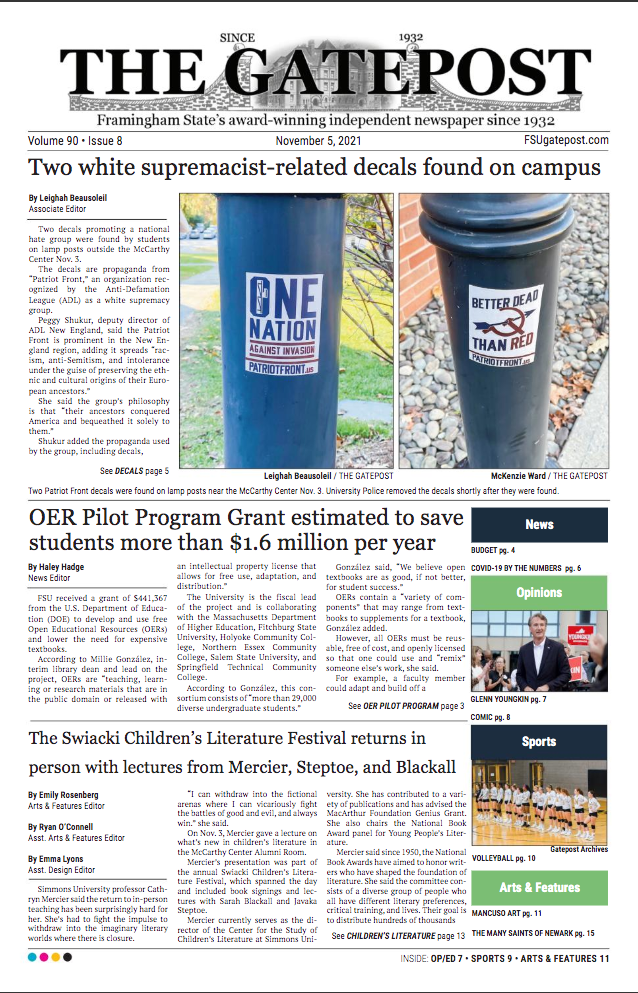Biased Media - Tools to identify bias
- Leighah Beausoleil
- Dec 5, 2021
- 4 min read
Updated: Dec 13, 2021
I saw a tweet the other day that truly describes what taking journalism classes has done to my mind.
The tweet read, “The journalistic urge to ask, ‘What’s your source?’ every time a friend says something interesting.”

For the better, I’ve become a little obsessed with knowing whether a source has a history of bias or publishing misinformation or disinformation.
A lot of my Introduction to Journalism course centered around this topic. My professor provided us with great resources on how to find this information out and how to spot it ourselves.
Firstly, she had us read the book “Blur: How to Know What’s True in the Age of Information Overload” by Bill Kovach and Rosenstiel.
The book touches on a variety of journalism-related matters, including diversity in the newsroom, journalism’s role in democracy, and various reporting methods used by famous journalists - but it also discussed the different types of sources and journalism models.
These models include journalism of verification, journalism of assertion, journalism of affirmation, and journalism of aggregation.
Models of Journalism
Journalism of verification is a traditional model that puts the highest value on accuracy and context. The benefit of this news type is that it’s all completely true and beneficial for people to read. The disadvantage is they don’t use any schemes to draw people in so they may lose their audience to other types of journalism.
Journalism of assertion is a newer model that puts highest value on immediacy and volume and in doing so tends to become a passive channel of information. This type of news allows for the information to get out as fast as possible, so people know what is going on when it happens. The problem with that is they often don’t check the legitimacy of the information until after it was already put on air.

This problem can arise with live interviews because the journalist cannot look up the information to fact check the people while the interview is going on so the information being given could be wrong.
If the journalist did take the time to look everything up, it would be less entertaining for the audience and they may feel more inclined to watch something else. To prevent these problems journalists can just not do live interviews or they can have someone else fact check the person during the interview.
Journalism of affirmation is a new political type of media that builds loyalty less on accuracy, completeness, or verification and more on affirming the beliefs of its audiences, and so tends to cherry-pick information that serves that purpose. This type of news draws its target audience in, and they are becoming informed, but it is only on information that they want to hear. The news is only to reinforce their already set beliefs.
Journalism of aggregation is the compilation of information and articles from other websites. People can easily get all their information from this type of source and it may have good information, but because they are from other sites, there is no knowing that their sources are correct and all the information is correct.
Knowing which news outlets use each type of model is an important part of accessing information.
Other aspects to be wary of when considering the validity of a news outlet is how they use a source that falls under the following: first-hand witnesses, expert analysts, and anonymous sources.
Types of sources
There are benefits and disadvantages to each of these sources.
First-hand witnesses are good because they saw everything happen and could hold some valuable information. The problem with them is that they could forget some of the details and could also be traumatized by the situation causing them to remember it differently.
Expert analysts are good because they know what they are talking about and can be very informative. The problem is that they could be very biased because this is what they have been studying for a long time.
Anonymous sources can be good because they have valuable information for the story, but because you cannot say who it is from you need to verify that information from multiple other sources and anonymous sources may appear unreliable.
Other Resources
Some other resources my professor provided us are the websites Media Bias Fact Check and All Sides.
The first website is a key tool in knowing whether a news source has a history of bias or any instances of false information. All you have to do is just search the news sources on the website.
The second is a great way for readers to see "all sides" of biases within the realm of journalism. It breaks news stories down into what is being said in the center, right, and left of the political spectrums.
The topic of news sources’ validity can be quite controversial, and I’ve noticed a lot of the conversation is specifically about CNN and Fox News.
You may be asking which is better?
Well, forget it - they are both biased and CNN uses the journalism of assertion model and Fox uses the journalism of the affirmation model. At the end of the day they just want views.
There is going to be a lot of talk about which news sources are good and what are bad, but it’s up to you to do the work and figure out which ones you can put your trust in. And when you are reporting for a news outlet consider how readers are going to view the validity of your reporting.
And don’t forget to ask - what’s your source?




Comments